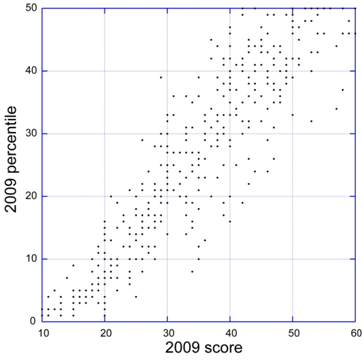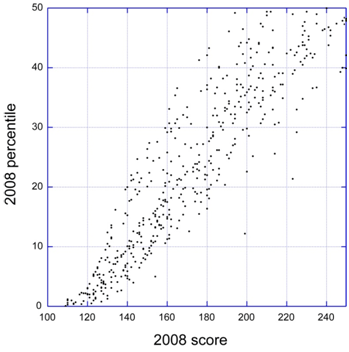This page is historical material reflecting the Feedback Loop Blog as it existed on
September 22, 2009. This page is no longer updated and links to external websites
and some internal pages may not work.
September 22, 2009
Archived: The New Scoring System
At the recent meeting of the National Advisory General Medical Sciences Council, our Council members had their first opportunity to examine summary statements using the new peer review scoring system.
Many aspects of the new scoring system are unfamiliar, including the use of overall impact scores as integers from 10 (best) to 90 (worst). A summary of the new scoring system is well described in a scoring system and procedure document, and an earlier version of this was shared widely with reviewers.
As background, I compiled some data for approximately 300 NIGMS R01 applications reviewed under the new system.


